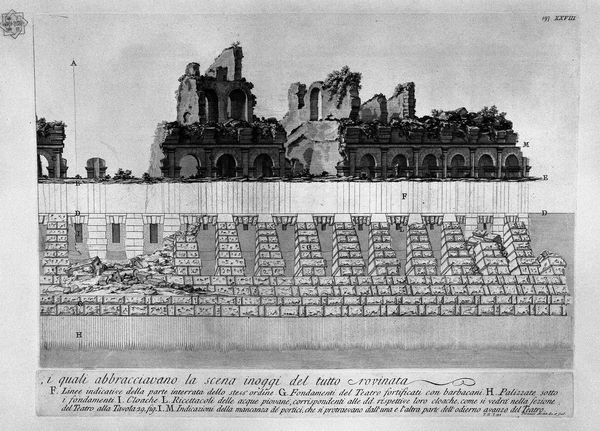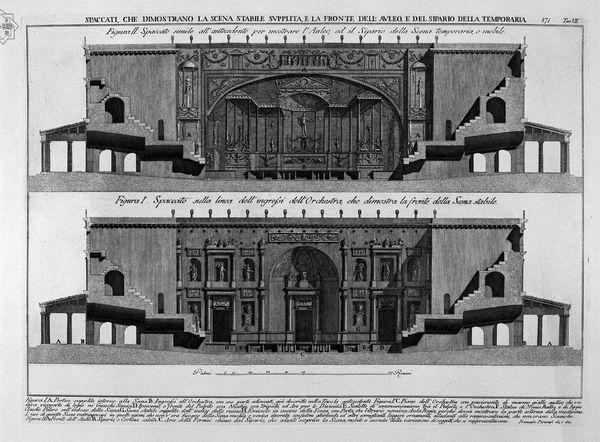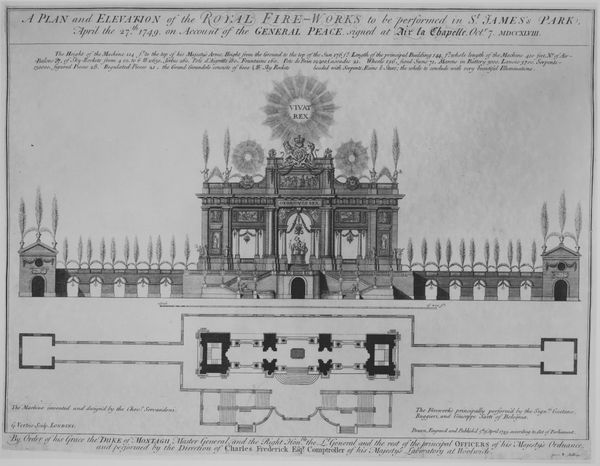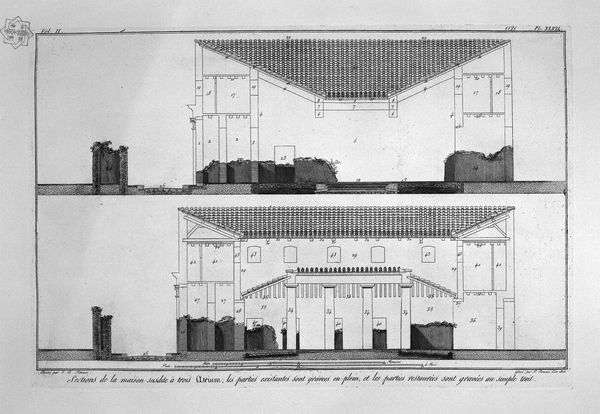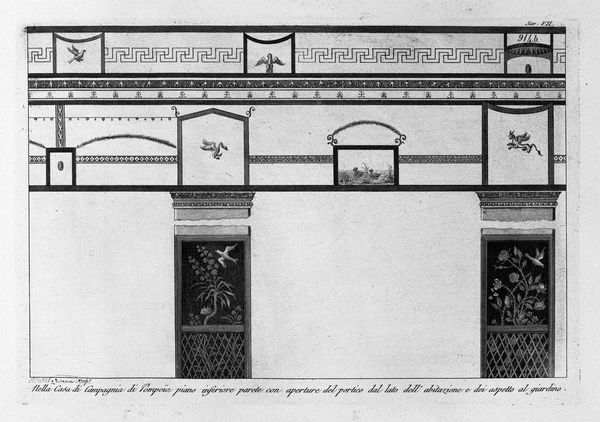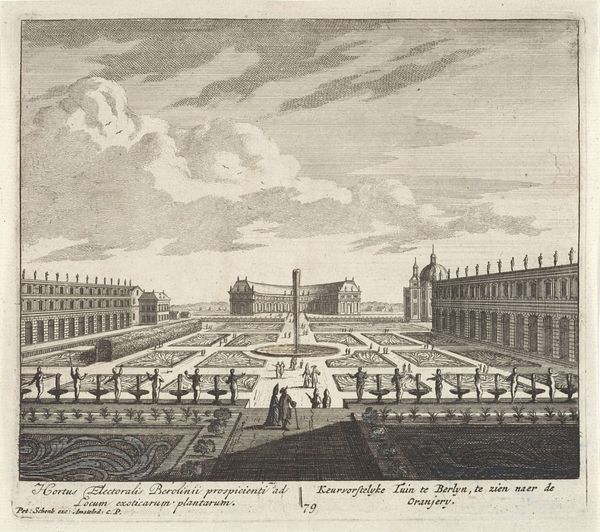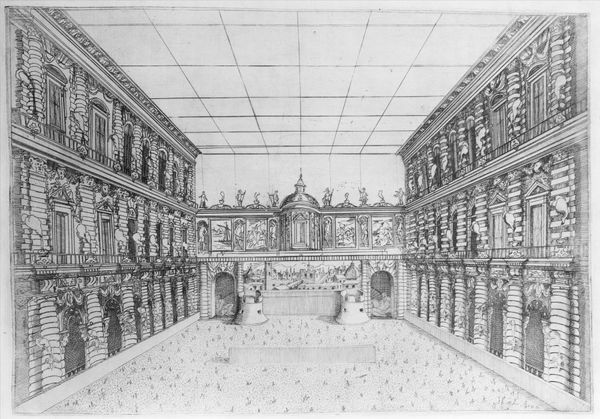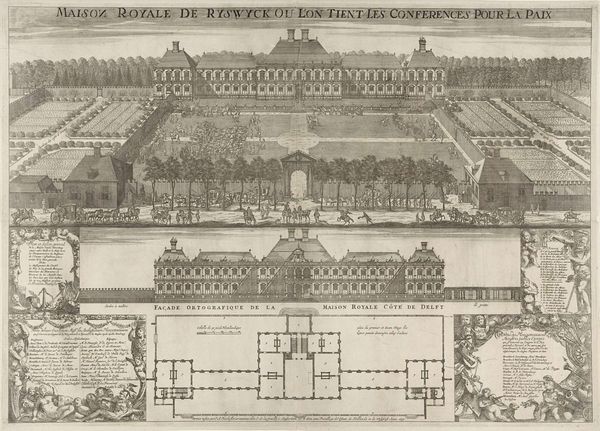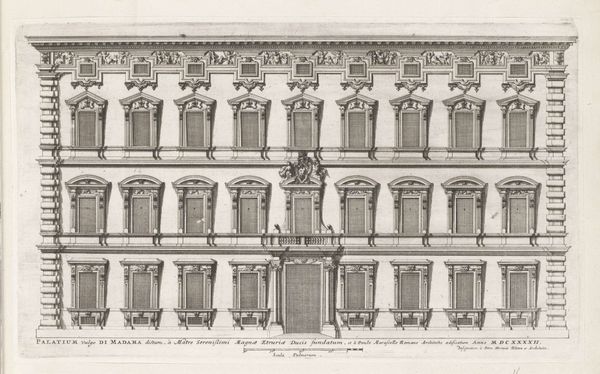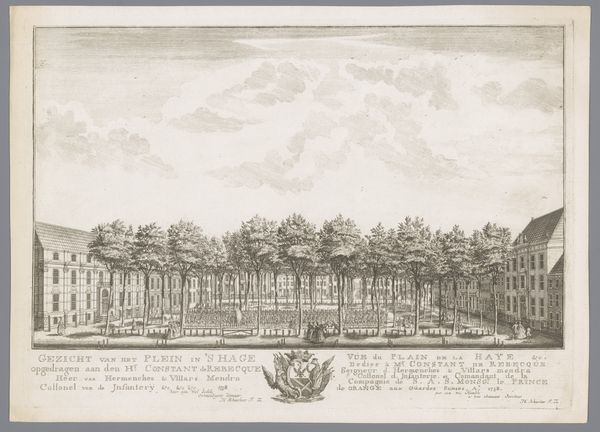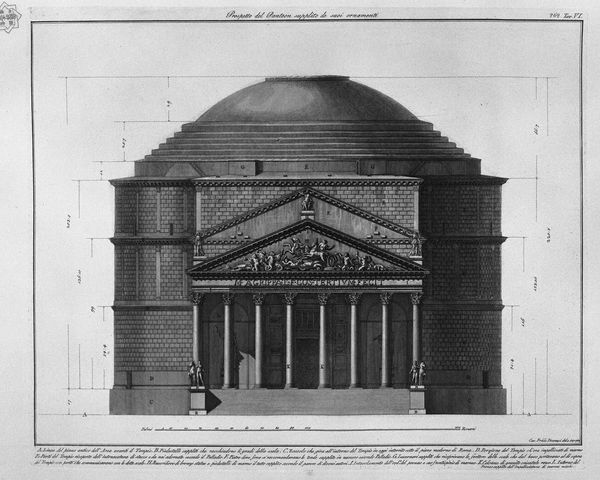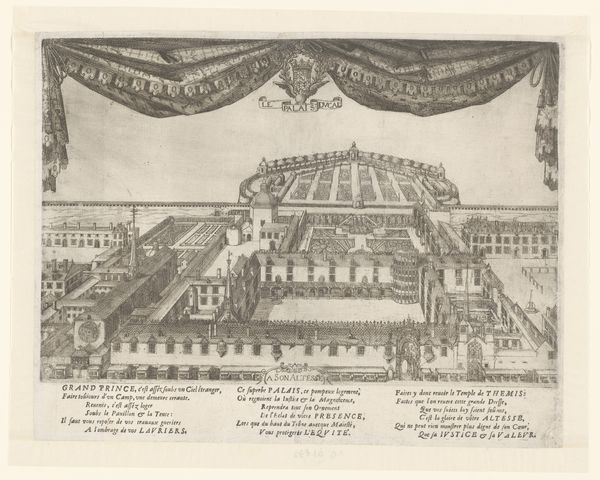
The Roman antiquities, t. 4, Plate XXVIII. External façade of the advancement of circular arches of the Theatre of Marcellus.
0:00
0:00
print, etching, engraving, architecture
# print
#
etching
#
landscape
#
perspective
#
text
#
romanesque
#
arch
#
cityscape
#
history-painting
#
engraving
#
architecture
Copyright: Public domain
Curator: This etching by Giovanni Battista Piranesi depicts the external facade of the Theatre of Marcellus. I'm particularly struck by the detail he captures using printmaking techniques. What grabs you about this piece? Editor: I find it really interesting how it combines the ruin with, essentially, an architectural diagram. It feels part historical record, part... blueprint? What's your read on this combination? Curator: The combination you're noting speaks volumes about 18th-century artistic and intellectual interests. Piranesi is interested in more than just representation. Consider the labour involved. The extraction of the stone, the original Roman construction, its partial deconstruction, and Piranesi's redrawing, etching, printing, and the dissemination of the image, even. Each phase is part of the production of meaning, of value. Doesn't this re-present ancient grandeur through 18th-century eyes for 18th-century consumption? Editor: So, not just showing the ruins but participating in a sort of cycle of... repurposing? Curator: Exactly! He is reshaping our understanding of classical forms to appeal to contemporary tastes. The mass production of prints meant that even "high art" became a commodity. It also suggests a tension; he is employing highly skilled labor in a print to document earlier building construction using labor, skills, and building trades that now lie in partial ruin. Is Piranesi pointing toward the ephemerality of even Rome's greatest achievements? Editor: I hadn't considered it that way before – seeing the print itself as part of a larger production and consumption cycle, linked to labor! It adds another layer to how I understand the art. Curator: Indeed, paying attention to the processes and the historical moment allows for a deeper understanding of works like these. Thanks for sharing your thoughts, this has been illuminating.
Comments
No comments
Be the first to comment and join the conversation on the ultimate creative platform.
